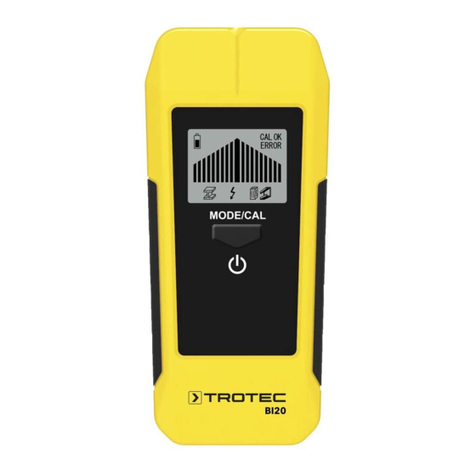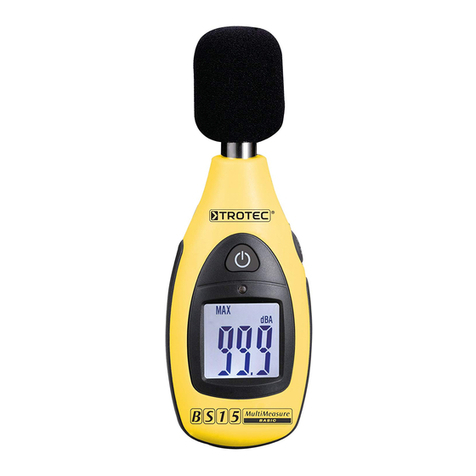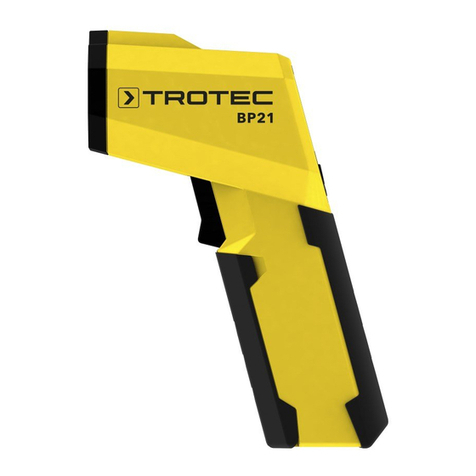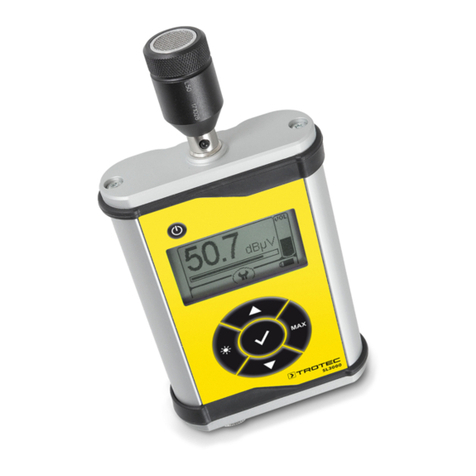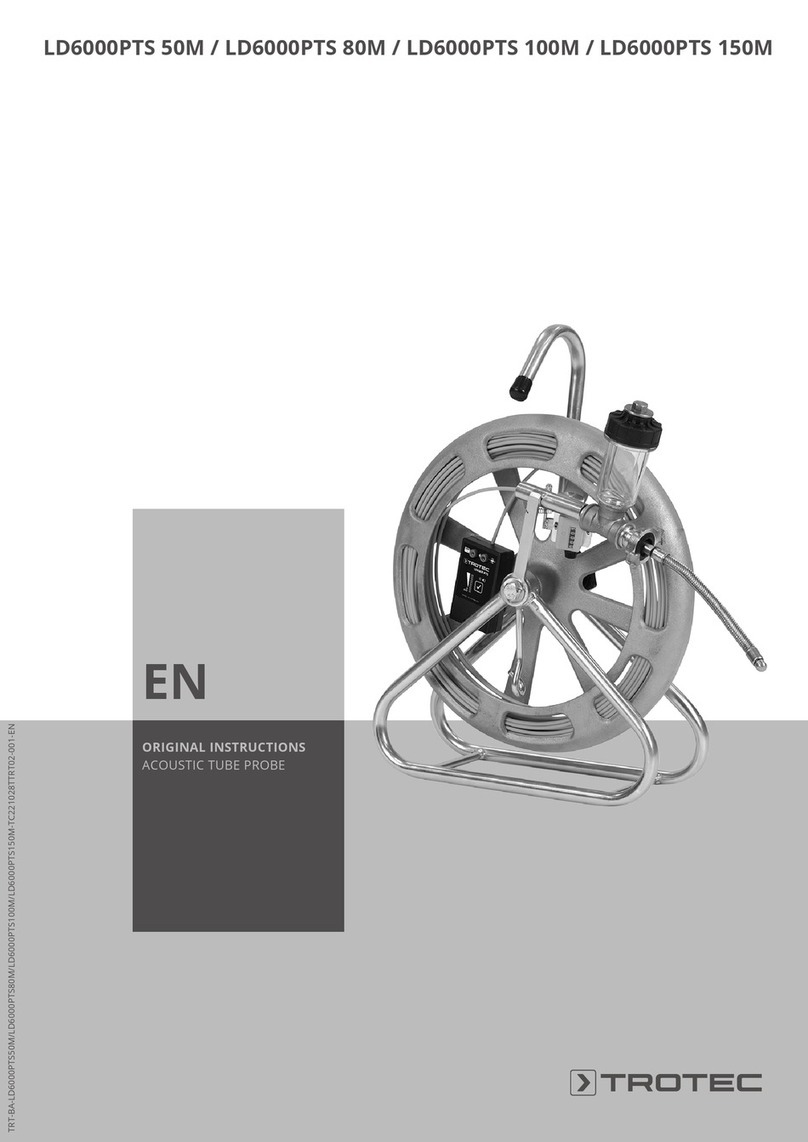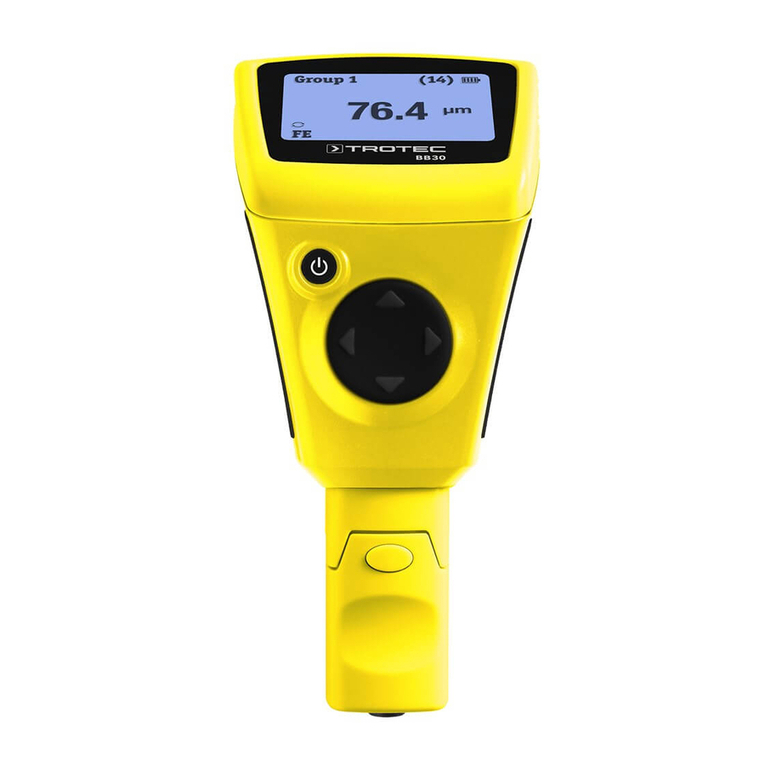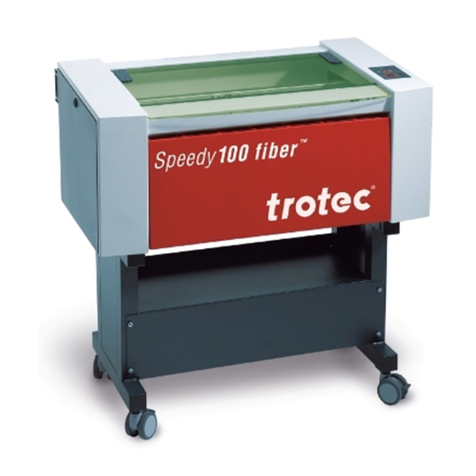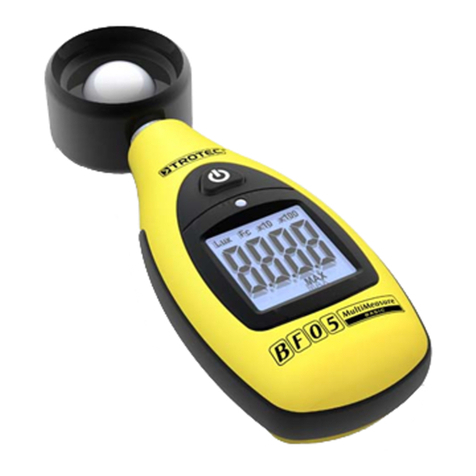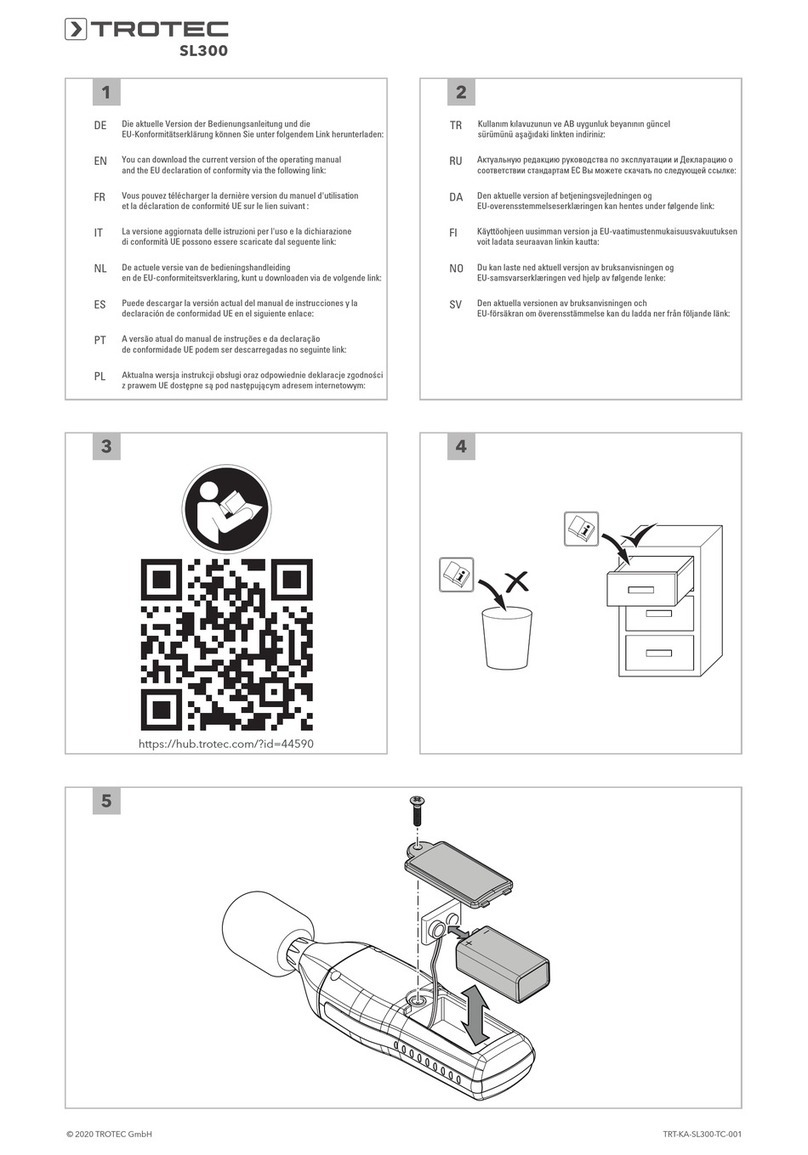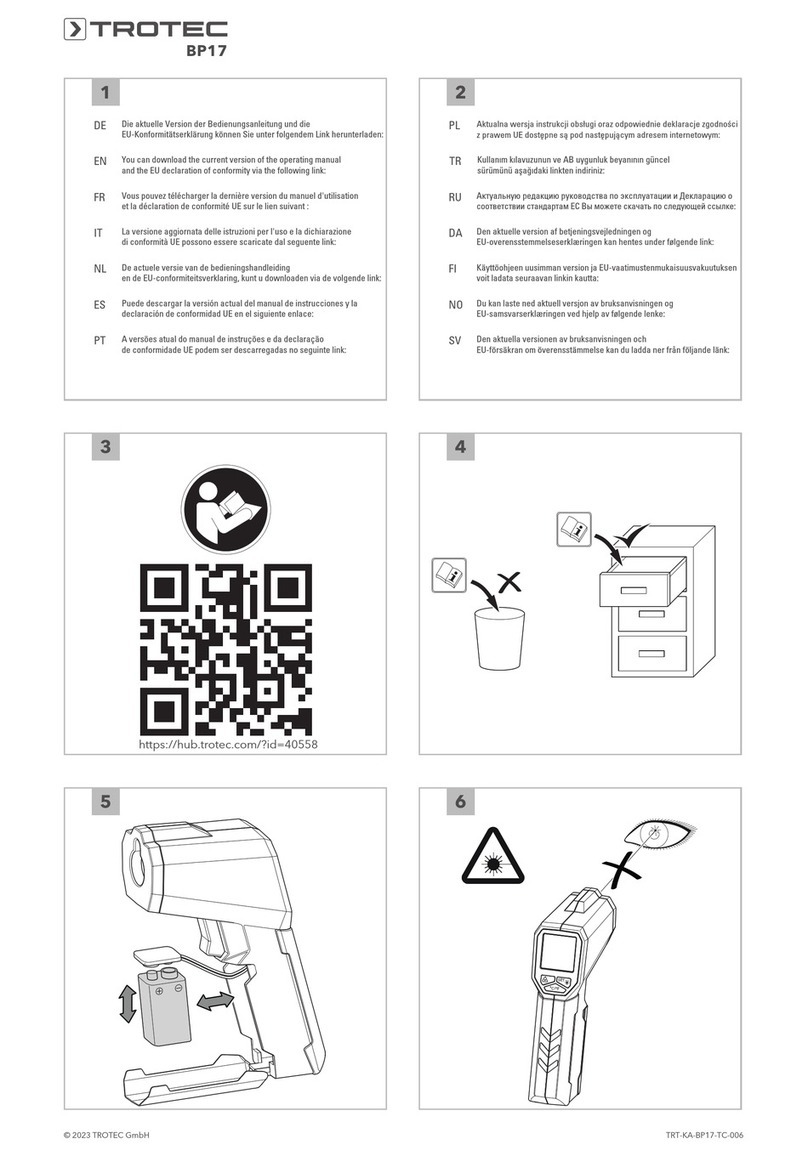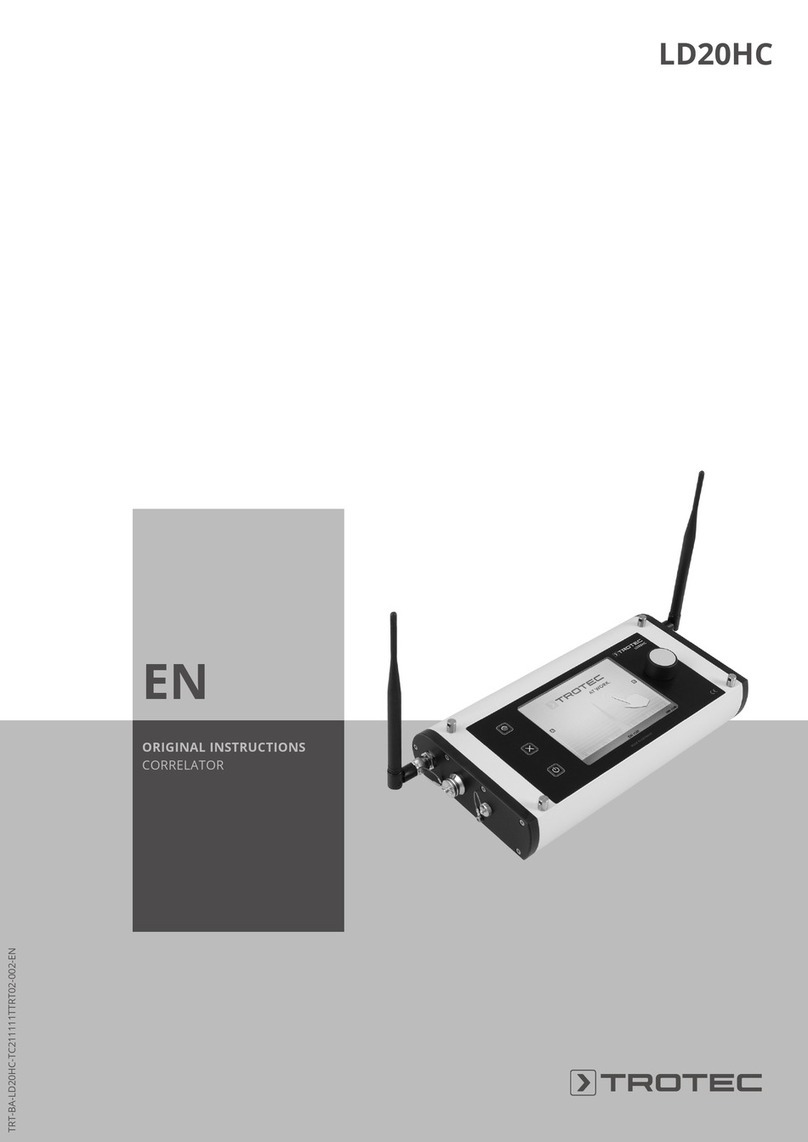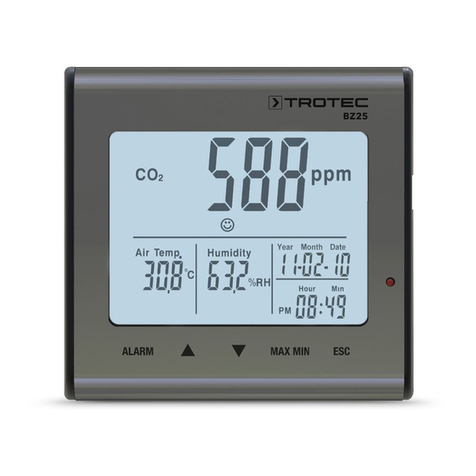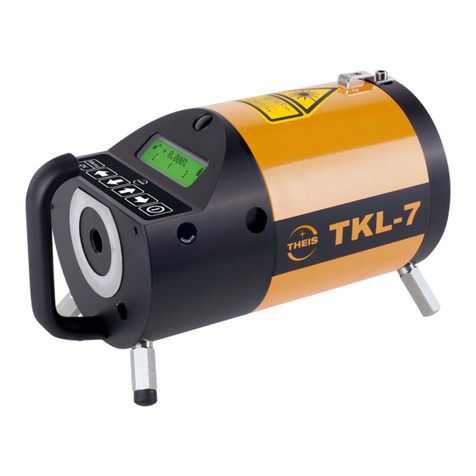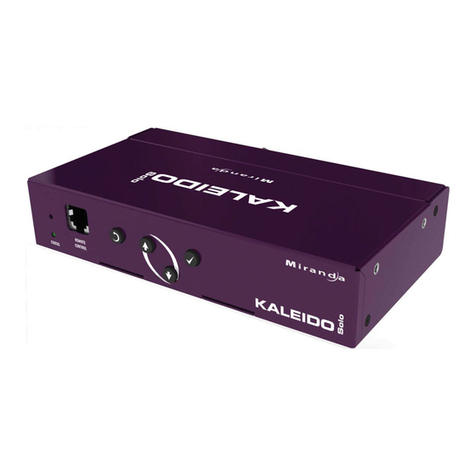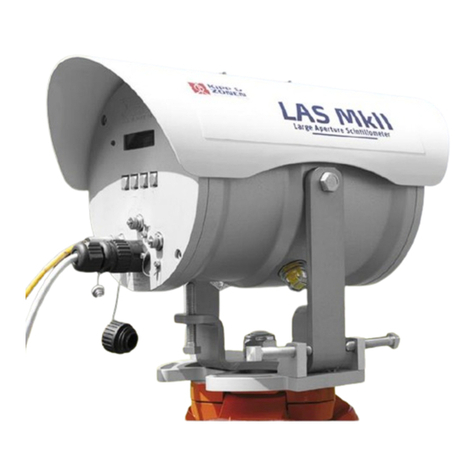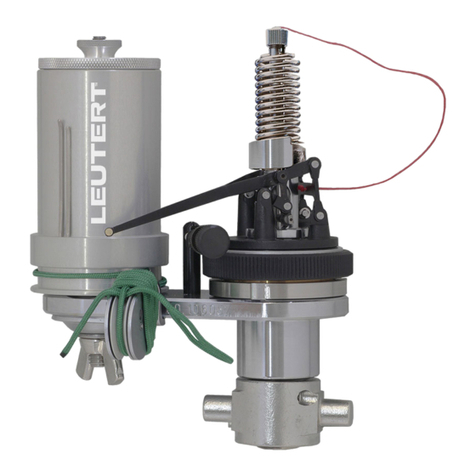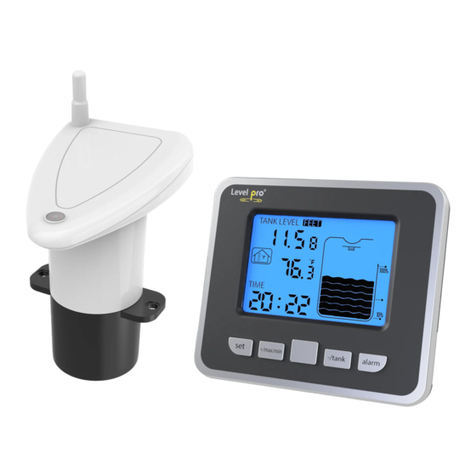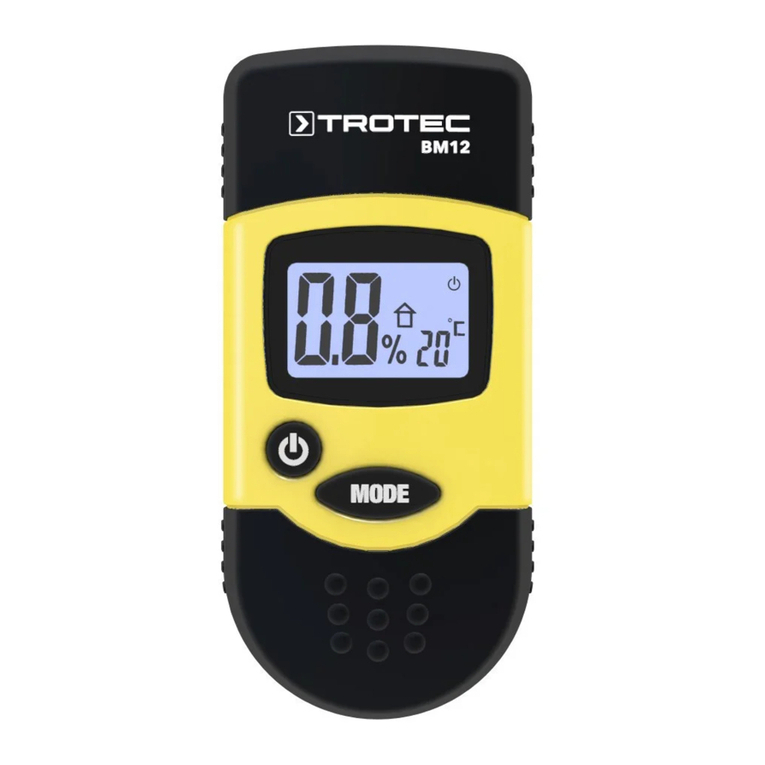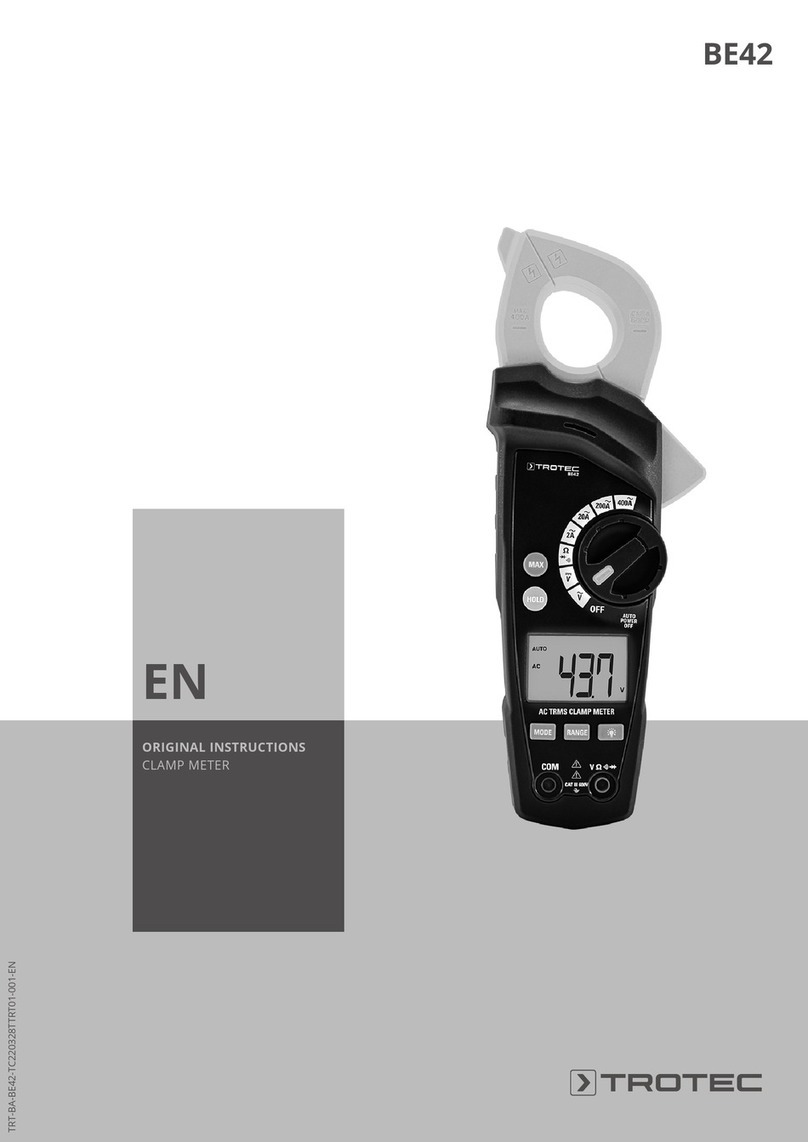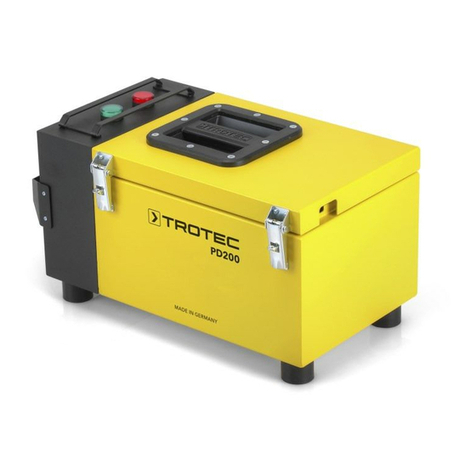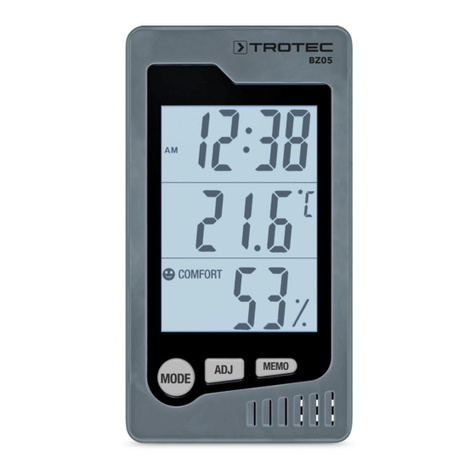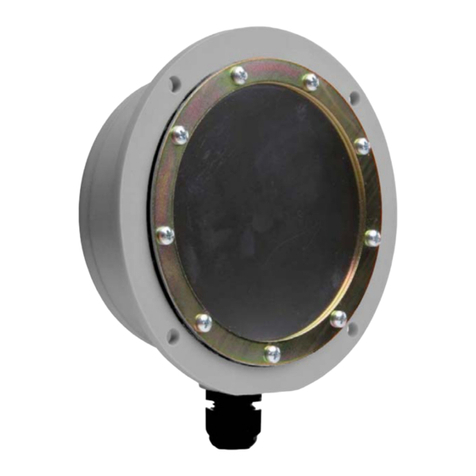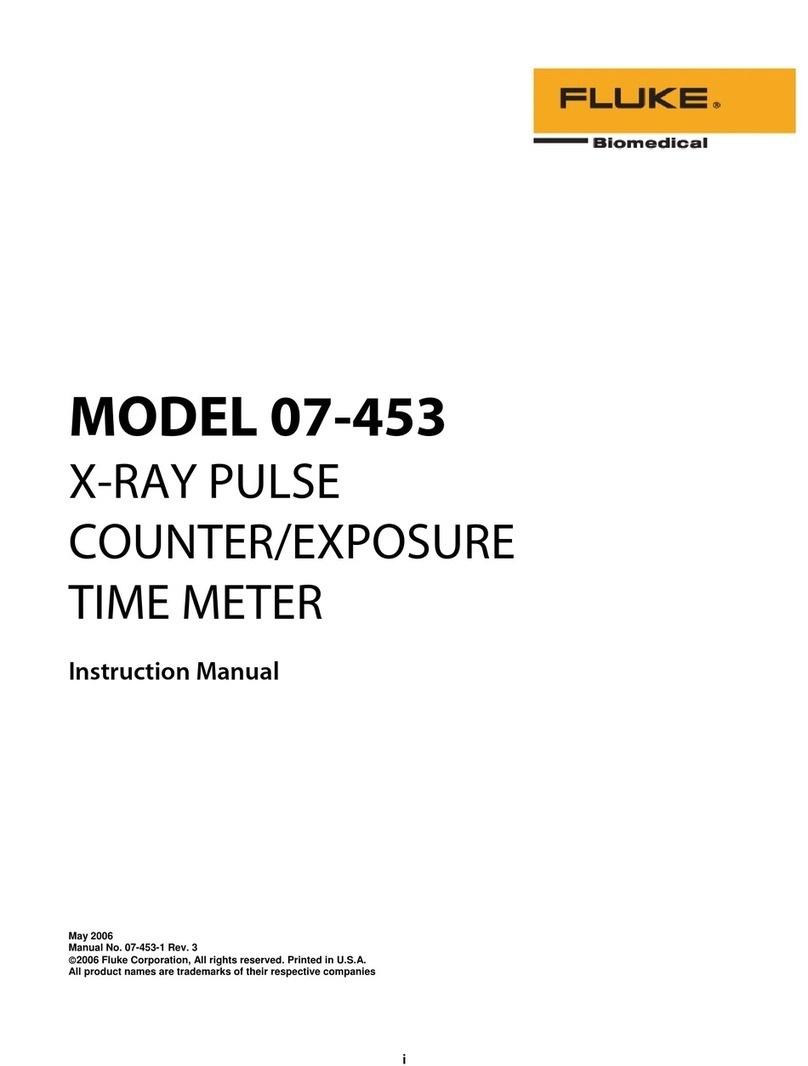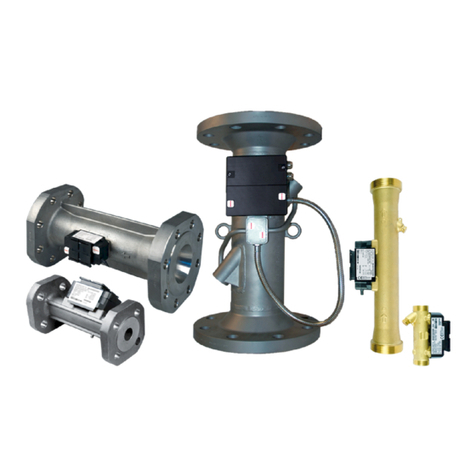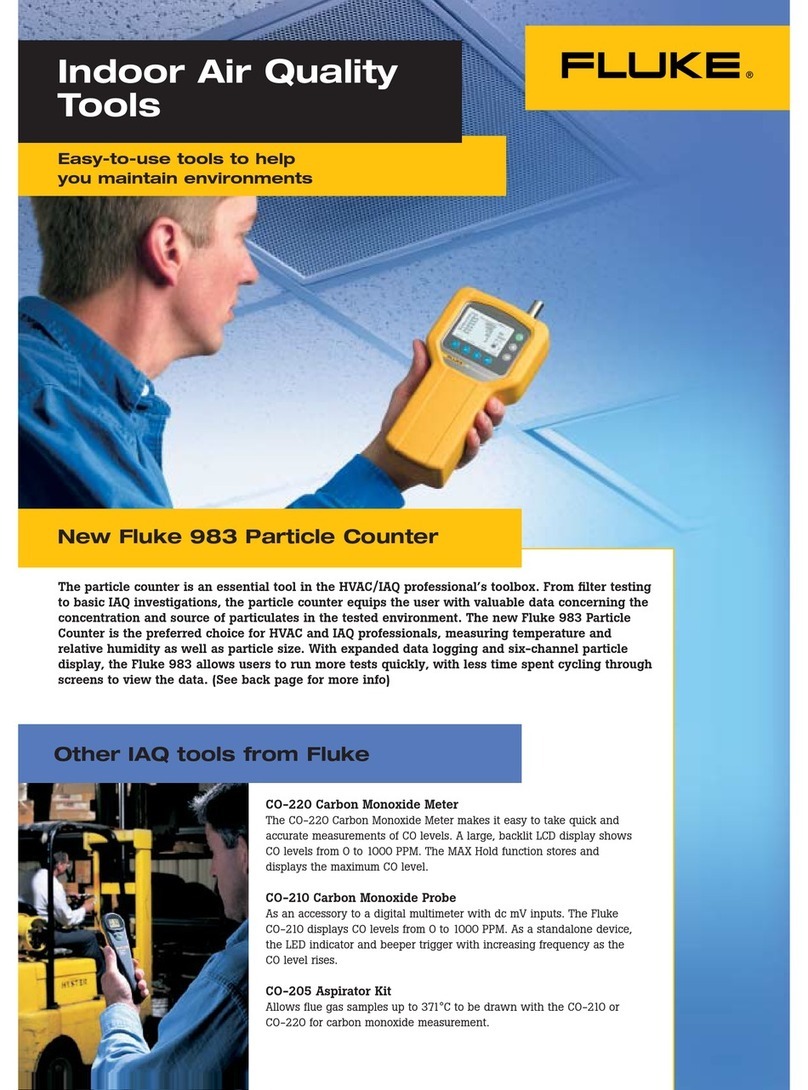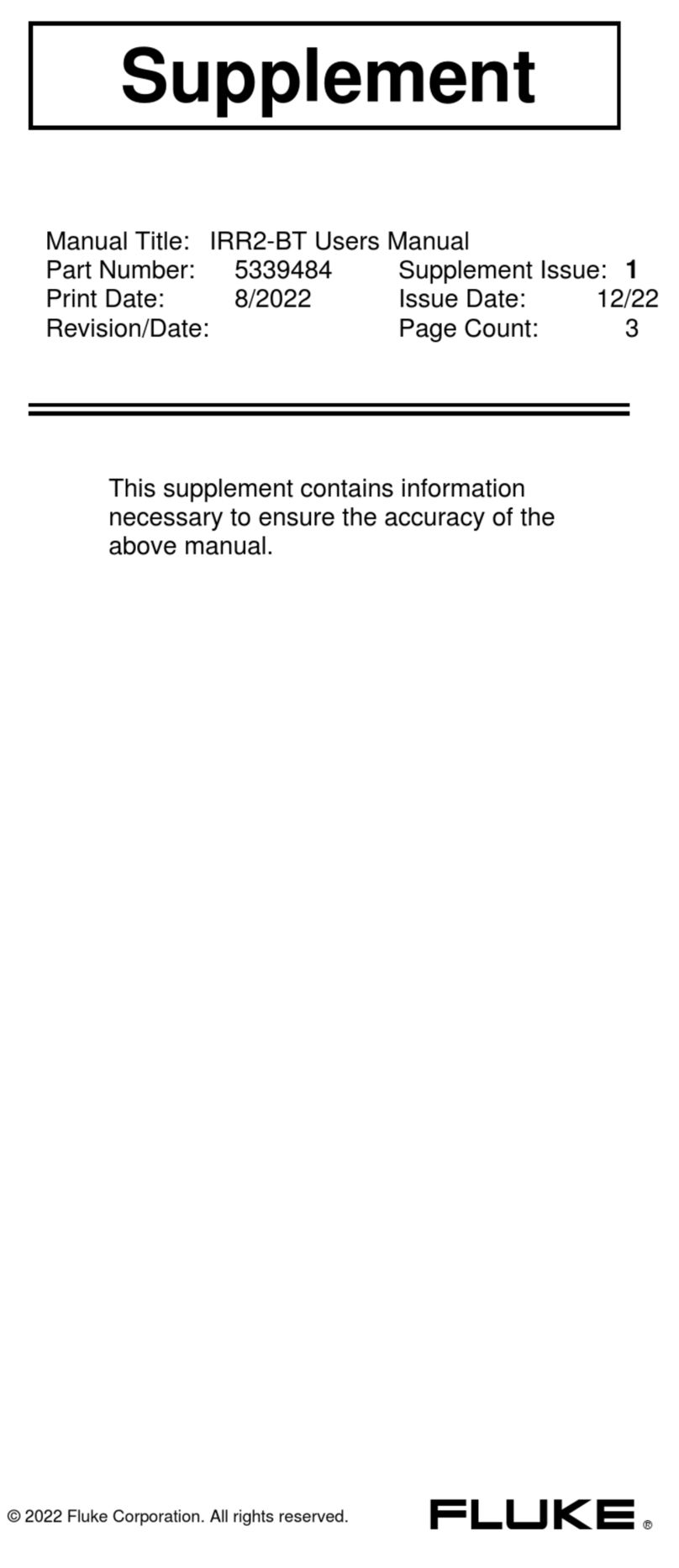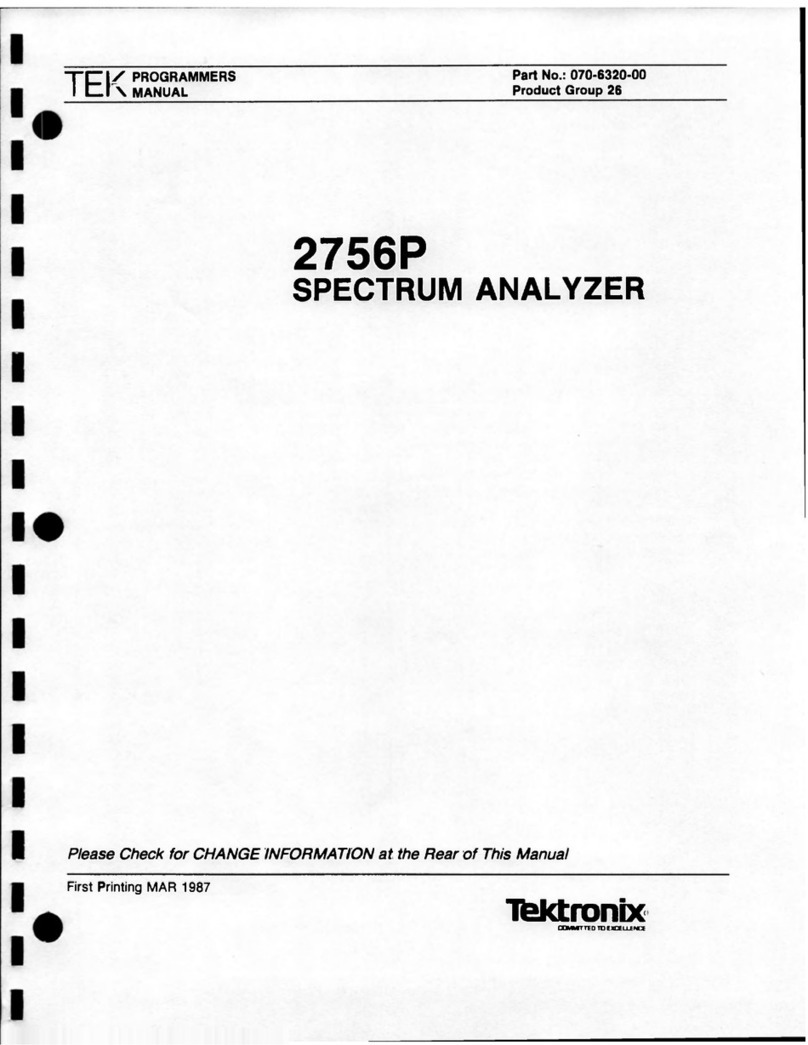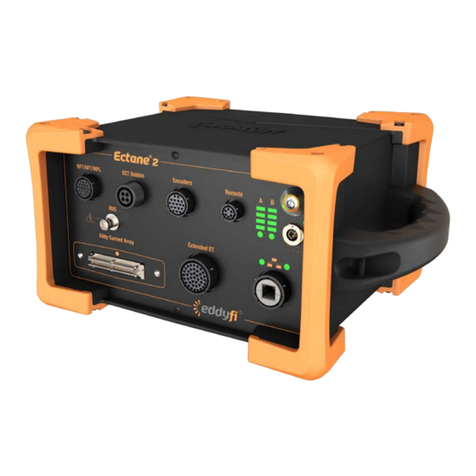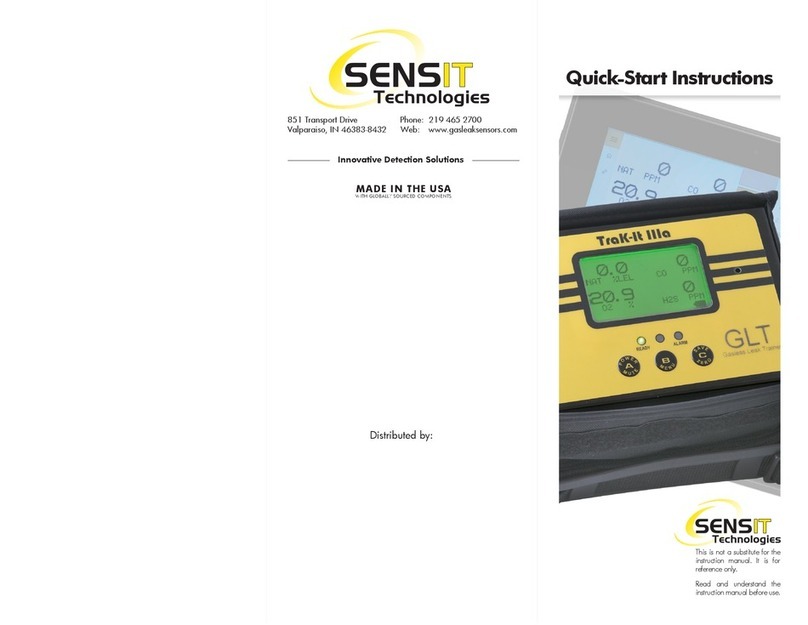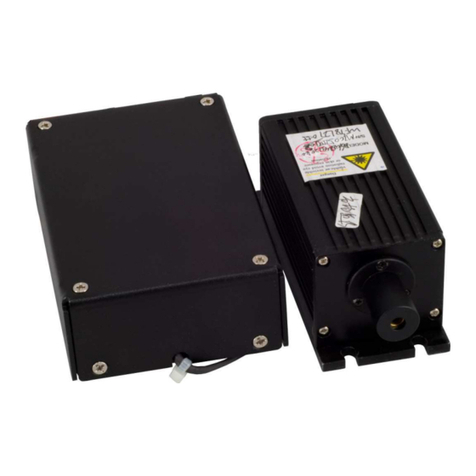
EN 11
moisture measuring device T510
• The other typical error source to be considered is material
characteristics. This is particularly noticeable in case of
high moisture contents above the fibre saturation point
(high conductivity above 30 M%). Owing to the irregular
cellular structure of various wood types and the i.a.
resulting irregular water retention within and outside of the
cells, these measured values in part substantially deviate
from the actual moisture contents. It is, however, not
possible to put a precise number on these deviations, even
though the principle-related accuracies with 0.1M%
suggest a higher accuracy than for the medium measuring
range from 6 to 30M%.
When looking at both error sources, one can conclude, that the
resistance measurement method is particularly well suited for
the determination of the moisture content between 6 and 30M
%.
Notes regarding the wood moisture measurement
• Make sure you have set the correct type of measurement
(wood).
• Make sure that the correct material code was selected.
• Prior to the actual measurement process, check the
temperature conditions. To do so, for instance a pyrometer
is to be used for measuring the surface temperature of the
wood type, which should then be compared with the wood
temperature set in the device. If both temperatures are
identical, measuring can be started.
If the wood temperature is higher than the value set in the
measuring device, a higher wood moisture than really
there will be displayed as a result.
• When measuring sawn timber, observe the instructions of
DIN EN 13183-2.
• Always insert the measuring tips transverse to the wood
fibre direction.
The conductivity transverse to the wood fibre direction is
lower than that in line with it.
Depending on the type of wood it varies by the factor 2.3
to 8.
• When selecting the measuring positions observe the
following:
– Always measure the material moisture at three different
positions in order to achieve a sufficient accuracy by
means of the arithmetic average.
– Do not measure the face, because there are mainly dry
areas.
– Preferably do not measure at cracks, branches or resin
pockets either.
• Oily and/or aqueous timber preservatives affect the
measurement result.
• If possible, do not measure wood with a temperature
below -5°C. Too low wood temperatures distort the result
of the measurement.
• Avoid static charge of the material to be measured due to
friction. Static charge distorts the measurement result.
• With a wood moisture of less than 10%, electrostatic
forces can appear at the good to be measured. This can
falsify the result of the measurement. Experience has
shown that this occurs at the outlet of veneer drying
plants. Remove the static charge by use of suitable
grounding measures.
• The temperature value set within the device must be
identical to the wood temperature.
Example:
With a set temperature value of 20°C and a wood
temperature of 30°C the measurement result would be
distorted upwards by approx. 1.5%.
• The measurement's accuracy depends on the contact
pressure of the measuring tips. The measuring tips must
be connected to the wood in a way that the contact
resistance is small as compared to the measuring
resistance.
• The measurement results ought to be checked on a
sample basis by means of the Darr test.
Building moisture measurement
The electric conductivity of a dry, mineral construction material
(e.g. cementitious screed) is very low. When the building
material absorbs water, the conductivity of the material can
quickly increase or the resistance decrease.
What needs to be considered for the assessment of the
measurement results is that the results are affected by the
material composition of the measured goods:
• The presence of soluble salts can distort the measurement
result substantially.
The more salt is present, the higher will be the displayed
measurement value.
• Yet another variable for the evaluation of the results is the
connection of the electrodes with the construction
material. In case of mineral, porous building materials,
slight electrode contact can cause a comparatively high
contact resistance. This can falsify the result of the
measurement.
The accuracy of the measurement results is thus lower for
mineral construction materials than for wood.
Building moisture measurements allow only qualitative
conclusions about the moisture (dry, damp, wet).
Quantitative conclusions about the moisture content of the
mineral material to be measured can only be drawn by applying
the Darr procedure or the CM method.
















